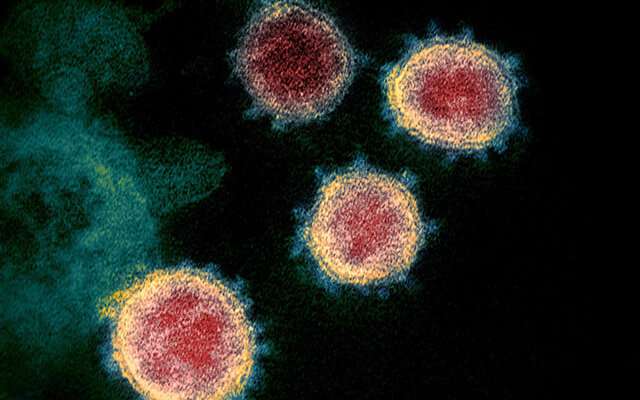High virus count in the lungs drives COVID-19 deaths

A buildup of coronavirus in the lungs is likely behind the steep mortality rates seen in the pandemic, a new study finds. The results contrast with previous suspicions that simultaneous infections, such as bacterial pneumonia or overreaction of the body’s immune defense system, played major roles in heightened risk of death, the investigators say.
Led by researchers at NYU Grossman School of Medicine, the new study showed that people who died of COVID-19 had on average 10 times the amount of virus, or viral load, in their lower airways as did severely ill patients who survived their illness. Meanwhile, the investigators found no evidence implicating a secondary bacterial infection as the cause of the deaths, although they cautioned that this may be due to the frequent course of antibiotics given to critically ill patients.
“Our findings suggest that the body’s failure to cope with the large numbers of virus infecting the lungs is largely responsible for COVID-19 deaths in the pandemic,” says study lead author Imran Sulaiman, MD, Ph.D., an adjunct professor in the Department of Medicine at NYU Langone Health.
Current guidelines from the Centers for Disease Control and Prevention, he notes, do not encourage use of antivirals such as remdesivir for severely ill patients on mechanical ventilation. But Sulaiman says the NYU Langone study results suggest that these medications may still remain a valuable tool in treating these patients.
Despite previous concerns that the virus may prompt the immune system to attack the body’s own lung tissue and lead to dangerous levels of inflammation, the investigators found no evidence that this was a major contributor to COVID-19 deaths in the group studied. In fact, Sulaiman notes that the strength of the immune response appeared proportionate to the amount of virus in the lungs.
The coronavirus has so far killed over 4 million people worldwide, researchers say. Those placed on mechanical ventilators in order to breathe fare particularly poorly, with 70 percent nationwide succumbing to the illness. Notably, experts attribute the high mortality seen in other viral pandemics such as the Spanish flu in 1918 and swine flu in 2009 to a secondary bacterial infection. However, it remained unclear whether a similar issue afflicted people with COVID-19.
The new study, publishing online Aug. 31 in the journal Nature Microbiology, was designed to clarify the role of secondary infections, viral load, and immune cell populations in COVID-19 mortality, according to Sulaiman. He says the investigation provides the most detailed survey of the lower airway environment in coronavirus patients.
For the investigation, the researchers collected bacterial and fungal samples from the lungs of 589 men and women who were hospitalized in NYU Langone facilities in Manhattan and on Long Island. All required mechanical ventilation. For a subset of 142 patients who also received a bronchoscopy procedure to clear their air passages, the investigators analyzed the amount of virus within their lower airways and identified the microbes present by studying small pieces of the germs’ genetic code. The study authors also surveyed the type of immune cells and compounds located in the lower airways.
Among the findings, the study revealed that those who died had on average 50 percent lower production of a type of immune chemical that targets the coronavirus compared with the COVID-19 patients who survived the illness. These customized proteins are part of the body’s adaptive immune system, a subset of cells and chemicals that “remember” invading newly encountered microbes, leaving the body better prepared for future exposure.
“These results suggest that a problem with the adaptive immune system is preventing it from effectively combating the coronavirus,” says study senior author Leopoldo Segal, MD. “If we can identify the source of this issue, we may be able to find an effective treatment that works by bolstering the body’s own defenses,” says Segal, an associate professor in the Department of Medicine at NYU Langone.
He cautions that the investigators only studied coronavirus patients who survived their first two weeks of hospitalization. It is possible, he says, that bacterial infections or autoimmune reactions may play a greater role in COVID-19 mortality that occurs earlier.
Source: Read Full Article


